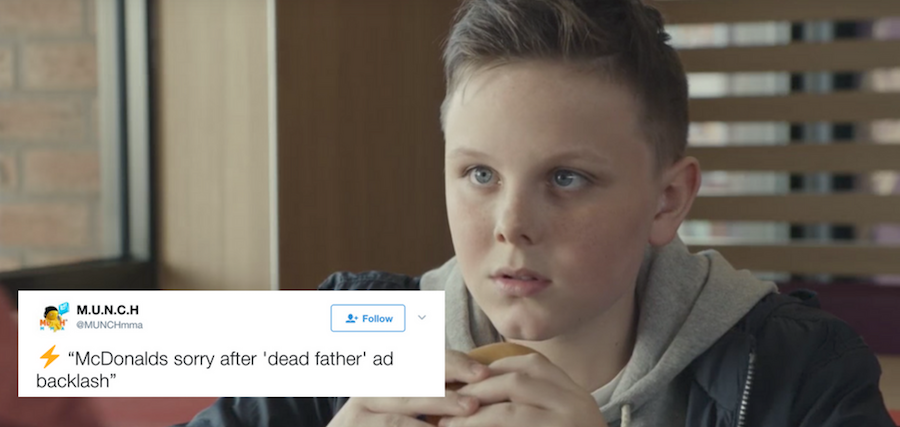Adding emotional ‘sizzle’ to advertising can increase effectiveness, as shown by IPA research. However, this approach is a tricky one and can backfire badly, as described in a Drum article by Evgeny Bik, formerly Marketing Controller of Premier Foods. He illustrates the risks of emotive advertising using recent flawed examples from big brands. As Evgeny points out, “The price for getting emotive advertising wrong is a lot higher – especially when brands explore pressing social issues.” When these campaigns crash and burn badly they generate national or even global headlines, as was the case with Pepsi’s infamous and ill-fated Kendall Jenner ad that mimicked a Black Lives Matter march.
And then there is McDonald’s toe-curlingly embarrassing film, ‘Dead Dad’, that was pulled from British TV screens less than a week after going on air, as reported here. It tells the story of a teenage boy asking his mum about his late father in an attempt to find something the pair had in common. He lacks the eye colour, football skills and ability to get the girl possessed by his dad. But worry not. His mum reveals that they DO have something much more important in common. Yup. Dad also loved McDonald’s Filet-O-Fish, just like his son. He even spilt sauce on his chin the same way. This flawed attempt to exploit childhood grief to sell fried fish created an immediate push-back from the media and general public. McDonald’s pulled the ad, apologised and said they would “review our creative process to ensure this situation never occurs again.”
So, how can you avoid “pushing the creative boat out so far it sinks”, as Evgeny aptly puts it? He suggests three watchouts.
1. Tell the right story
Emotive advertising works best when it “leaves the audience happier than they found them. Viewers can take an emotional roller-coaster ride, but the final stop should be higher than the entry point,” suggests Evgeny. The McDonald’s ad, in contrast, starts on an emotional low by showing a boy whose dad has died, and then drags us down further as sadly see he finds nothing in common with his father. The attempt to ‘end on a high’ falls flat on its face by suggesting that a shared love for Filet-o-Fish makes up for everything. The story arc is flawed.
In contrast, the John Lewis Christmas campaign is a masterpiece in brand narrative, as I posted on here. In the 2015 ad, ‘Man on the Moon’, we feel sad for a slightly strange old dude all his lonesome. But the kindness of the girl buying the gift of a telescope from John Lewis pulls on the heartstrings in a good way.

2. Anchor on a brand truth
The importance of integrating the brand truth into your communication story is a topic I have posted on many times. “With brand cues interspersed throughout memory encoding was 9% higher, compared to ads where the brand was only weakly present,” according to research by Thinkbox here. The challenge is to integrate the brand in a relevant way that builds on an authentic brand truth. And this is the second issue with the Mc Donald’s film. Suggesting a shared love of Filet-o-Fish can create a bond between the son and his dead dad lacks credibility. “The disbelief and rejection of such a suggestion is enough evoke a set of negative emotions in the audience and render the whole ad as repulsive,” says Evgeny.
3. Back up the message with action
A final watch out is playing on a social issue for what seems like purely commercial reasons. “The ads have to serve as a genuine effort to raise awareness of the social issues,” as Evgeny suggests. But more important still are brand actions to address the problem head on. Dove famously campaigned for ‘real beauty’ to sell more soap. But they have also invested money and time over more than a decade in the Dove Self Esteem program for young girls. “McDonald’s could have framed their creative as raising awareness of childhood grief and made a donation to Grief Encounter,” proposes Evgeny.

In conclusion, mastering the art of emotive advertising is a challenging one that needs great care and attention. It needs the right story with a relevant and credible brand role, told with sensitivity and backed up with actions, not just words.
